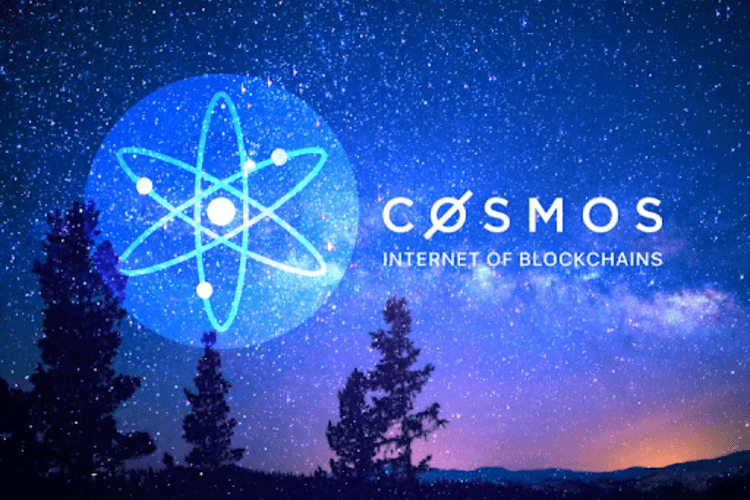Is Cosmos (ATOM) a New Era of the Crypto World?

Since the introduction of Cosmos Hub in 2019, the first blockchain in the Cosmos ecosystem, the Cosmos ecosystem has grown rapidly. The Inter-Blockchain Communication (IBC) protocol connects over 20 blockchains, including Cosmos Hub, Osmosis, Crypto.Org, and Terra, in the Cosmos ecosystem, allowing independent blockchains to communicate and transfer data and assets. According to Map of Zones statistics, there were over 1.6 million IBC transfers in the previous 30 days.
As of now, Defi Llama estimates that the entire value of the four major cryptocurrency exchanges is US$181 billion (Ethereum, Binance, Solana, and Avalanche).
Competition from other smart contract platforms like Solana and Cardano has arisen to threaten Ethereum's position as the world's most popular smart contract platform. Additionally, the Cosmos ecosystem is notable for the fact that it allows separate blockchains to connect with one another.
What Do You Need To Know About Cosmos?
Decentralized networks of blockchains that are able to exchange information and tokens with each other without authorization are referred to as "cosmos," which claims to be the "internet of blockchains."
Some of the problems experienced by previous blockchain systems, such as scalability, usability, and governance are addressed by offering the tools to assist developers in easily constructing separate blockchains for a range of use cases and allowing blockchains in the network to connect with one another.
Using the Tendermint BFT consensus mechanism, the Cosmos ecosystem's "zones" are powered by separate blockchains. Consensus can be reached even if part of the network's nodes fail or engage in malicious behavior. First, on the Cosmos network, the Cosmos Hub is the first blockchain, and ATOM is its native coin. As time goes by, many people get interested in the ATOM price prediction for 2022 as the demand for the mentioned currency increases. In addition to that, as many people find this digital currency as a new BTC, the demand escalates respectively. Some experts think that ATOM is going to perform well in 2022, while some of them are skeptical, and think that crypto is going to underperform.
In 2014, Jae Kwon launched Tendermint (formerly known as All in Bits Inc.) and built Tendermint Core, a blockchain engine that develops proof-of-stake consensus algorithms. "A Network of Distributed Ledgers" was released in 2016 by Tendermint co-founder Ethan Buchman and Tendermint co-founders Kwon and Buchman after they refined the Tendermint consensus algorithm.
Both the Interchain Foundation's Interchain GmbH and Informal Systems, a spinoff of the ICF research and development team, are in charge of the ICF's financing program. Tendermint co-founder Buchman serves as CEO of Informal Systems.
Tendermint, a software development firm, has been hired by the Interchain Foundation to construct the Cosmos Network and its infrastructure. Cosmos ecosystem contributor Tendermint secured US$9 million in a Series A fundraising round in 2019 for the project's development.
A recent interview with Forkast.News by Peng Zhong, CEO of Tendermint and the first employee of Tendermint in 2015, reveals that Tendermint had originally planned to market its consensus technology to huge organizations. While initially focusing on creating as many sovereign blockchains as possible, Cosmos later opted to concentrate on building up the Cosmos network, which would enable users to run their own network with the on-chain government while allowing for asset transfers.
With the IBC-enabled chains, we've seen a number of instances of this," Zhong added. A profit target of the same length as its previous uptrend, also known as the flagpole, is set when it finally breaks out of range, heading in the opposite direction of its prior trend. To put it another way, based on the current breakout point, this provides a price goal of around $65 per share.
The bullish setup in ATOM came to fruition when the stock soared about 330 percent from its low of $7.82 in June to this week's swing high of more than $32 per share.
Another analyst, identified as 'Bluntz,' projected that ATOM will continue to grow higher based on the gains in Avalanche (AVAXcomparable) earlier this year.
ATOM's ability to break over its earlier highs, according to Pentoshi and Bluntz, will serve as a springboard for additional rises. Following a similar trend, AVAX soared by a stunning 250 percent after establishing strong support in the $50 to $60 region, according to the company.
Cosmos, like Ethereum, aspires to be an "internet of blockchains," and it intends to make it easy for developers to build blockchains for a variety of use cases or applications, as well as for blockchains to interface and transact with one another.
At least until recently, blockchains such as Bitcoin were kept apart from one another and were unable to connect or interact with one another.
Cosmos is a platform that enables blockchains to connect with one another without the need for a third party to authorize the communication. Its open-source technologies such as consensus engines, software development kits (SDKs), an Inter-Blockchain Communication Protocol (which functions similarly to TCP/IP but for blockchains), and a Cosmos software development kit all contribute to the organization's ultimate goal of becoming an interconnected network of blockchains.
The Cosmos Hub blockchain, the first blockchain in the Cosmos ecosystem, went online on March 13th, 2019. ATOM, the native cryptocurrency of Cosmos Hub, enables tokenized transactions, staking, and voting, all of which are made possible via the blockchain. A market value of US$7.8 billion places ATOM as the 27th most valuable cryptocurrency according to CoinGecko, which rates it as the 27th most valuable cryptocurrency. CoinGecko reports that the price of ATOM reached a high of US$44.42 on September 20th, 2021 and that it is now trading at US$27.39 as of this writing, according to CoinGecko.